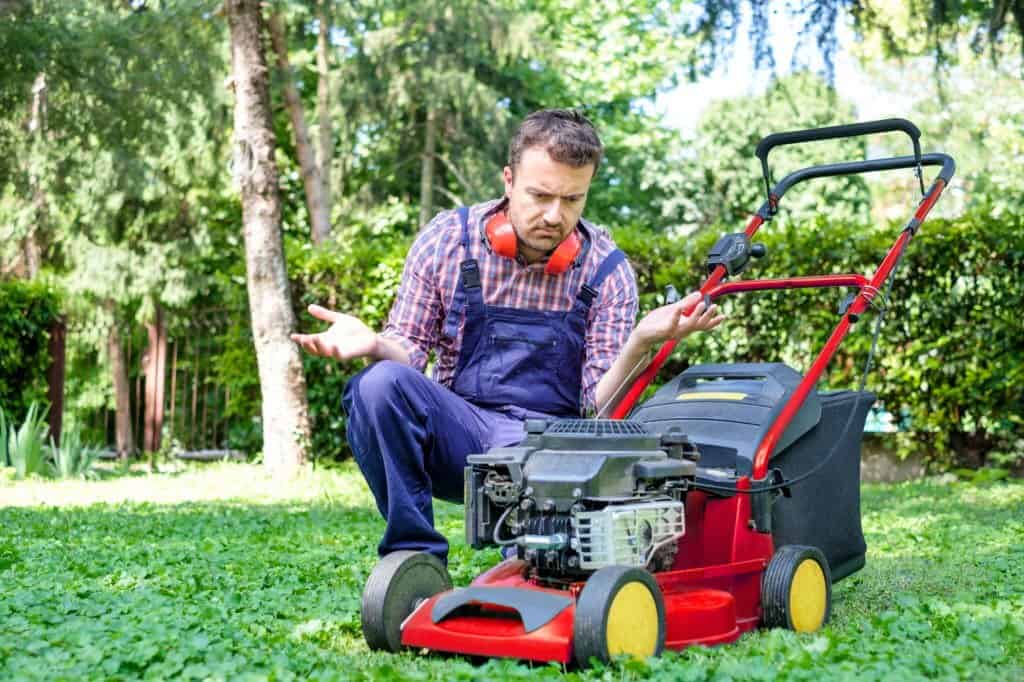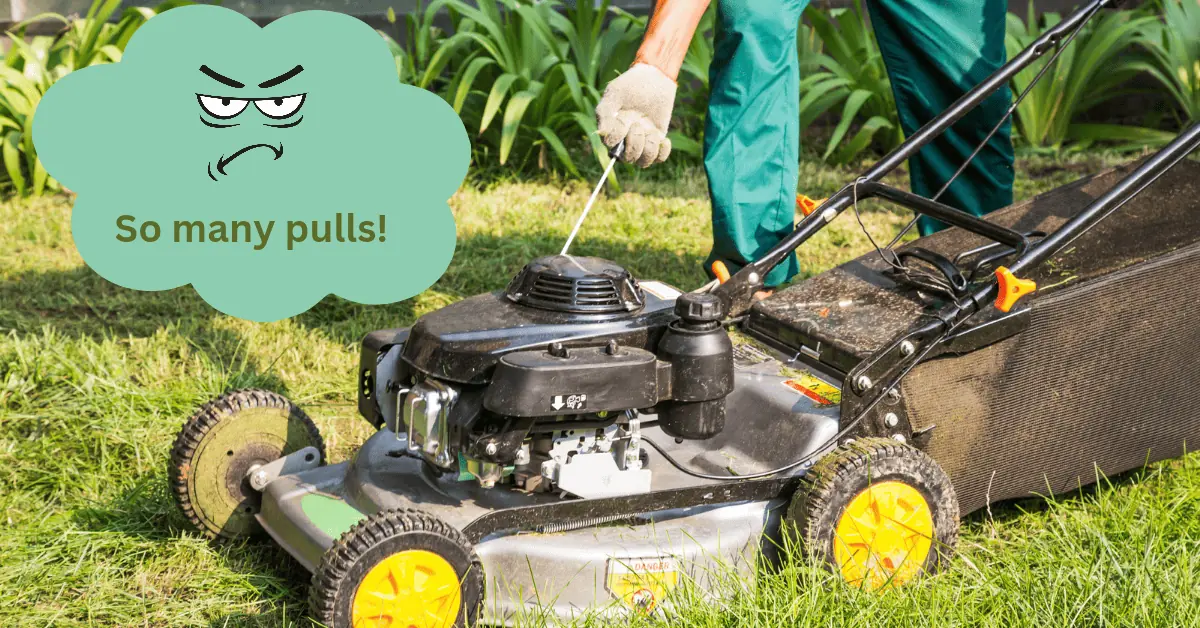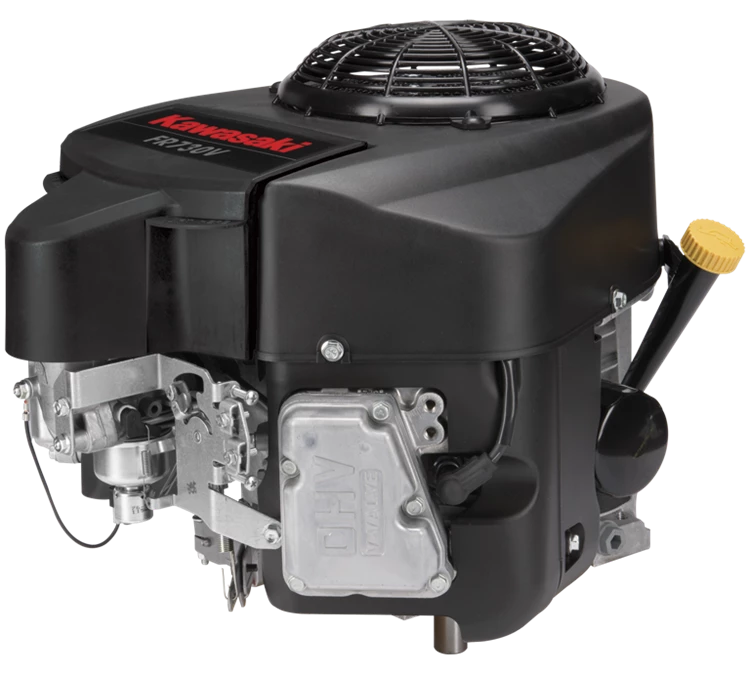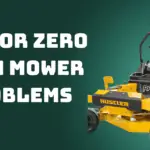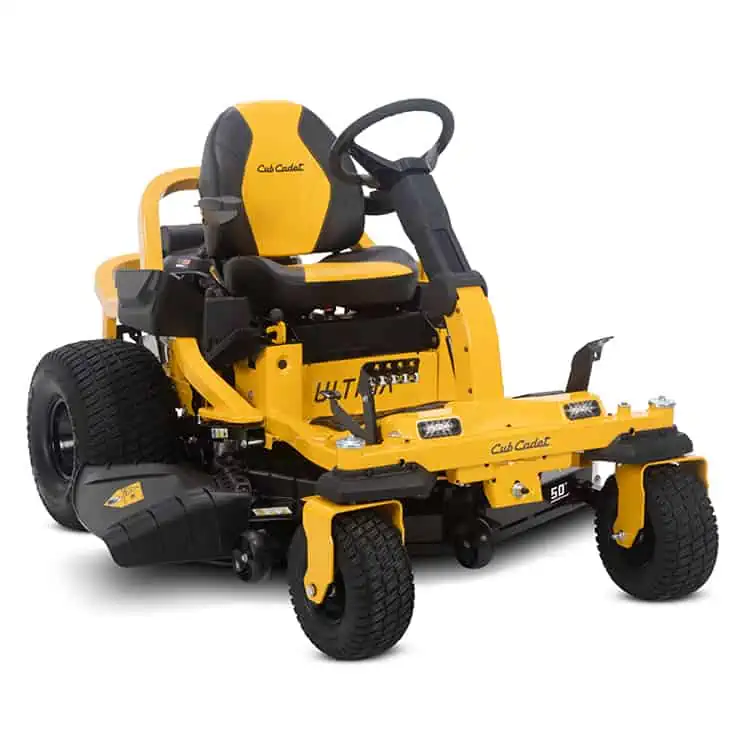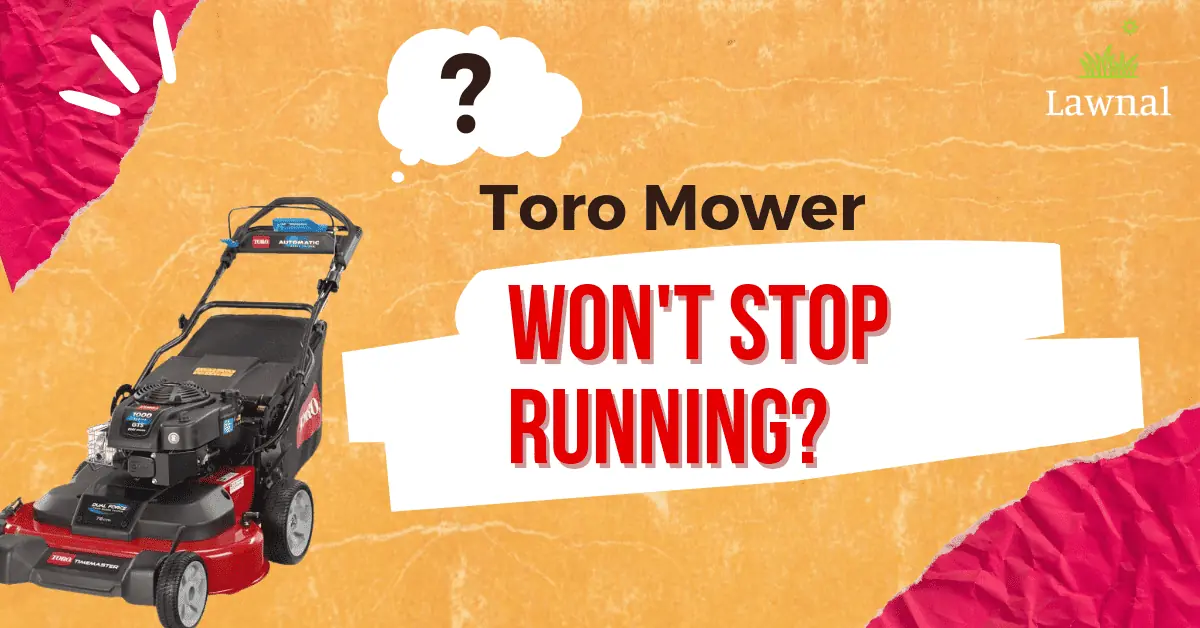This is quite a common problem with lawnmowers, but it doesn’t make it any less frustrating. Going to start your lawn mower, pumped and motivated to mow your lawn, and then realizing it won’t start is annoying. If your lawnmower is not running at full power, it can make the job more challenging and time-consuming.
There could be several reasons a lawn mower is not operating at full power. Some common ones include dirty air filters, fuel problems, spark plug issues, carburetor issues, and mower deck obstruction.
Addressing these common issues can often get your lawn mower running at full power again. You can also follow methods to troubleshoot the lawn mower and discover the problem.
If these simple fixes don’t resolve the problem, it may be necessary to consult a professional repair technician.
Why your Mower does not Run at Full Power
1. Dirty or Clogged Air Filter
A dirty or clogged air filter leads to reduced engine performance. A clogged air filter restricts airflow to the engine, reducing its performance and causing it to run less efficiently. This can decrease power and speed, making it harder for the mower to cut through thick grass.
To avoid this problem, it’s essential to regularly check and clean the air filter on your lawn mower. A simple visual inspection can tell if the filter is dirty and needs cleaning or replacing. Regular maintenance will help ensure your mower runs smoothly and effectively and helps extend its lifespan.
2. Old or Stale Fuel
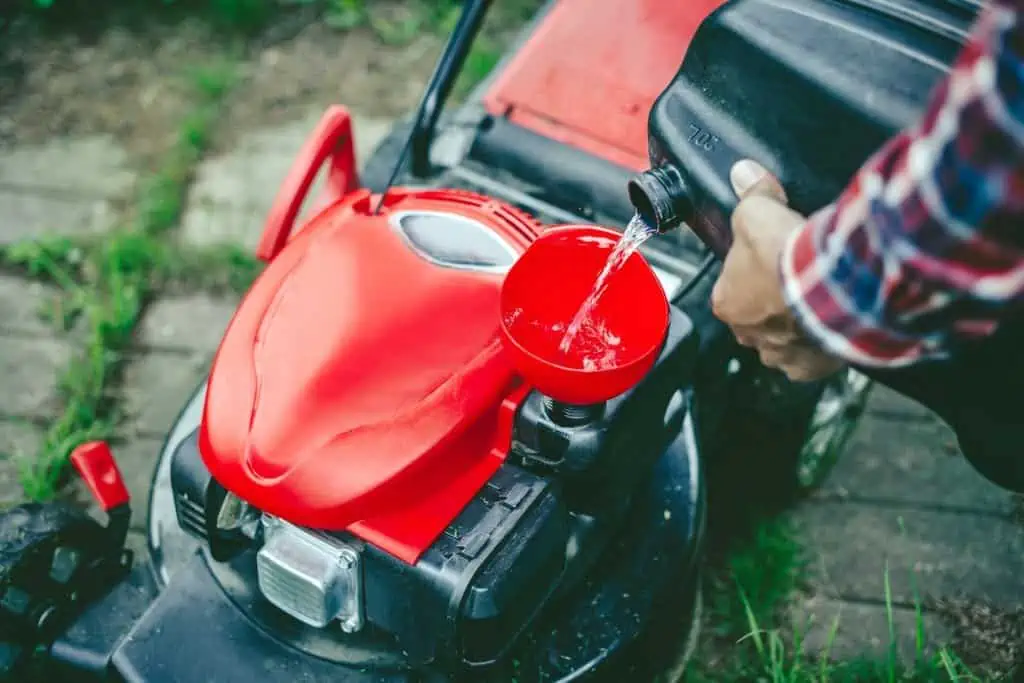
Besides causing your mower not to run at full power, old or stale fuel can cause other problems for a lawn mower. Stale fuel refers to gasoline that has been stored for a long time and has gone bad, typically because of the evaporation of the lighter components, which increases the concentration of the heavier, more viscous elements, such as:
- Hard starting: stale fuel can make it difficult for the lawn mower to start because it can clog the carburetor, fuel lines, and filters, making it harder for the engine to draw fuel.
- Engine stalling: as stale fuel is less volatile, the engine may stall mid-operation as it struggles to get sufficient fuel to run smoothly.
- Poor performance: old fuel can lead to a drop in engine performance, causing the lawn mower to run poorly and not perform to its full potential.
- Damaged engine: Over time, stale fuel can lead to corrosion and rusting of the carburetor and fuel system components, potentially causing severe and costly damage to the engine.
To prevent these issues, experts recommend storing fresh gasoline in clean, airtight containers away from heat and light. It is also a good idea to drain the fuel tank and carburetor before storing the lawn mower for an extended period.
3. Bad Engine Governor
An engine governor is a mechanical device that helps regulate the speed of an engine. If the governor is not working correctly, the engine may not be able to maintain its maximum RPM, resulting in reduced power output. This can cause a lawn mower to not run at full power, making it harder to cut grass effectively.
When an engine runs at a lower RPM, it cannot produce as much power as it would at its maximum RPM. The governor helps to regulate the engine speed by using a flyweight mechanism that moves in response to changes in engine speed. This flyweight mechanism is connected to the throttle, which controls the fuel flow to the engine.
If the governor is not functioning correctly, it may not be able to regulate the engine speed properly, resulting in a reduced RPM. This can cause the engine to run at lower power, making it harder to mow the lawn. Sometimes, the engine may stall or shut off entirely if the governor cannot regulate the speed correctly.
To fix a governor that is not working properly, it may be necessary to clean or repair the governor assembly or to replace it if it is damaged. It is also essential to check for other issues, such as a clogged air filter, dirty carburetor, or low oil levels, affecting the engine’s performance.
If a lawn mower’s engine governor is faulty, it can stop the engine from running at full power. This can result in reduced performance and make it harder to cut grass effectively. You can fix this issue by cleaning or repairing the governor assembly or checking for other issues affecting the engine’s performance.
4. Blocked Cooling Fins
Blocked or dirty cooling fins on a lawn mower engine can reduce its power output by hindering the flow of air, which is essential for dissipating heat and keeping the engine cool. As the engine overheats, it can cause a reduction in engine performance and in severe cases, engine damage.
The cooling fins are responsible for dissipating heat generated by the engine, and they need an adequate air flow to do so effectively. If the fins become clogged with debris, grass clippings, or dirt, the air flow is restricted, and the engine can become overheated.
5. Kinked Fuel Line
A kinked fuel line in a lawn mower can cause various issues affecting the engine’s performance and ultimately lead to engine failure. A kinked fuel line restricts the fuel flow from the tank to the carburetor, causing the engine to run lean, meaning it does not receive enough fuel.
This can result in several symptoms, including loss of power, stalling, and reduced speed. The lack of fuel also causes the engine to run hot, damaging the cylinder and other internal engine components.
In some cases, a kinked fuel line can also cause air to enter the fuel system, which can cause the engine to run rough or stall. If the fuel line is kinked for an extended period, the engine may not start, requiring repairs or replacement.
Therefore, it is vital to regularly check the fuel line for any kinks and replace it if necessary to ensure the proper engine functioning and extend the lawn mower’s life.
6. Clogged Fuel Filter
A clogged fuel filter in a lawn mower can cause several issues that can affect the mower’s performance. When the fuel filter becomes clogged with debris or impurities, it can restrict fuel flow to the engine, leading to a loss of power and decreased speed. The mower may even stall or not start at all.
If you do not replace the filter on time, the engine can become damaged due to a lack of lubrication. That can lead to costly repairs and reduce the lifespan of the mower. In addition, a clogged fuel filter can also cause the carburetor to become clogged, leading to further performance issues and potential engine damage.
You must check the fuel filter regularly and replace it if it appears clogged or dirty. That will help ensure the proper fuel flow to the engine, maintain optimal performance and prevent potential damage. By keeping the fuel filter clean and functioning correctly, you can extend the life of your lawn mower and avoid costly repairs.
7. Damaged Blades
Lawn mower blades that are either full or damaged can cause the mower to not run at full power for several reasons.
- Dull blades: If blades are dull, they won’t be able to cut grass efficiently, leading to a decrease in power. The mower engine has to work harder to mow the lawn, reducing its overall power.
- Bent blades: Blades bent or out of balance can put extra strain on the mower’s engine, reducing its power. The blade’s unbalanced weight can also cause the mower to vibrate excessively, reducing power.
- Clogged blades: Grass clippings, dirt, or other debris can become trapped on the blades, adding extra weight and resistance. The mower’s engine has to work harder to turn the blades, reducing its power.
- Damaged blades: If blades are damaged, such as bent or broken, the mower’s engine has to work harder to turn the blades, reducing power. Damaged blades can also pose a safety hazard, so replace them immediately.
8. Low Engine Speed
An engine speed that is set too low can prevent a lawn mower from running at full power for several reasons:
- Insufficient fuel and air supply: The engine requires a specific fuel and air mixture to run efficiently. When the speed is too low, the carburetor may be unable to provide the correct fuel-to-air ratio, leading to poor combustion and reduced power.
- Reduced spark: The spark plug’s firing rate is directly linked to the engine’s RPM. If the RPM is too low, the spark plug may not fire often enough, leading to a misfire and reduced power output.
- Overloading: If the engine’s speed is too low, it may not be able to handle heavy loads effectively, causing it to struggle and produce less power.
- Increased friction: An engine running at too low a speed can cause increased friction, leading to higher levels of wear and tear on the engine components and reducing its power.
- Reduced cooling: The engine’s cooling system is designed to work at a specific RPM range. If the speed is too low, the cooling system may be unable to keep up, leading to overheating and reduced power output.
- Engine stalling: If the engine’s speed is too low, it may stall and shut off, preventing the lawn mower from running at full power.
Final Words
Now that you know why your lawnmower is not running at full power, you can do something about it. Perform a comprehensive inspection of the mower components and other issues to identify the root cause of the problem.
Regular maintenance, such as cleaning the air filter and carburetor and replacing the spark plug, can prevent future issues and ensure your lawn mower runs smoothly and on full power. You might need a professional repair service if the problem is beyond your expertise.
